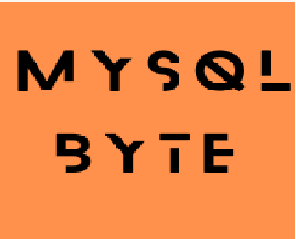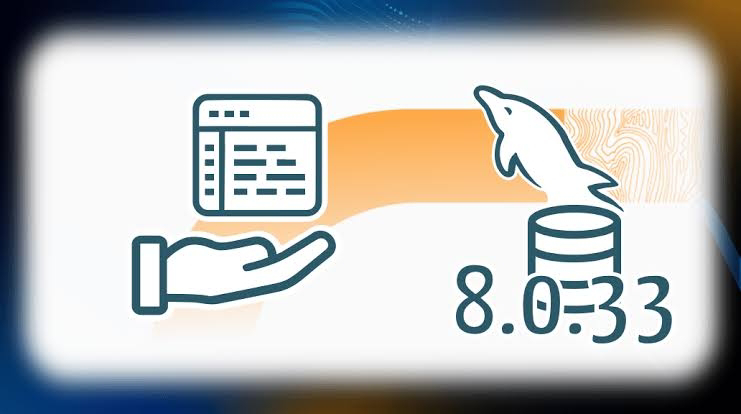Monday, May 15, 2023
MHA(Master High Availability)
MySQL 8.0.33: A New Release with Performance Improvements and Security Updates
Highlights of MySQL 8.0.33
- Performance Schema Server Telemetry Traces Service: This new service provides a way to collect performance data from MySQL servers. This data can be used to identify performance bottlenecks and improve the performance of MySQL applications.
- Improvements to the InnoDB storage engine: This includes support for larger table sizes and improved performance for some operations. This will make it possible to store more data in MySQL databases and improve the performance of MySQL applications that access large amounts of data.
- Bug fixes and security updates: This release includes a number of bug fixes and security updates. These fixes and updates will improve the stability and security of MySQL databases.
How to Upgrade to MySQL 8.0.33
To upgrade to MySQL 8.0.33, you can use the following steps:
- Download the MySQL 8.0.33 installation package from the MySQL website.
- Unzip the installation package to a directory of your choice.
- Run the following command to start the installation:
mysql_install_db --defaults-file=/path/to/my.cnf
- Replace
/path/to/my.cnfwith the path to the MySQL configuration file. - Start the MySQL server by running the following command:
service mysql start
- Once the MySQL server is started, you can connect to it using a MySQL client.
Conclusion
MySQL 8.0.33 is a significant release that includes a number of new features and improvements. If you are using an older version of MySQL, I encourage you to upgrade to MySQL 8.0.33.
Friday, May 12, 2023
Differences between MySQL and SQL Server in terms of their recovery models and binary logging
MySQL and SQL Server are two popular database management systems used by businesses around the world. While both systems have similarities in terms of their functionality, there are some important differences to consider when it comes to their recovery models and binary logging.
Monday, May 1, 2023
10 Step to consider before upgrade from MySQL 5.7 to MySQL 8.0
As of October 2021, MySQL 5.7 has reached its end of life and is no longer supported by Oracle. This means that there will be no more updates or security patches provided for this version of MySQL.
If you are currently running MySQL 5.7, it is recommended that you upgrade to a newer version of MySQL as soon as possible to ensure that your database is secure and up-to-date.
Upgrading from MySQL 5.7 to a newer version, such as MySQL 8.0, may require some preparation and testing to ensure a smooth transition. It is important to consult the MySQL documentation and consider the potential impacts on your applications and infrastructure before making any changes.
In addition, it is always a good practice to regularly backup your database to ensure that you can recover your data in case of any unexpected issues or failures.
Upgrading MySQL from version 5.7 to 8.0 involves several steps, including checking for compatibility issues, backing up your data, and performing the upgrade itself. Here's a general overview of the
process:
1. Check for compatibility issues: Before upgrading, it is important to check for any compatibility issues between your applications and MySQL 8.0. You can use the MySQL Compatibility Checker tool to identify any potential issues and address them before the upgrade.
2. Back up your data: It is crucial to back up your existing MySQL 5.7 data before upgrading to MySQL 8.0. You can use MySQL's built-in backup tool or third-party backup solutions to create a backup of your databases and configuration files.
3. Install MySQL 8.0: You can install MySQL 8.0 by downloading the installation package from the official MySQL website or using your operating system's package manager. Make sure to follow the instructions for your specific platform.
4. Migrate your data: Once you have installed MySQL 8.0, you can migrate your data using the MySQL Upgrade Tool or by manually exporting and importing your data.
5. Update your applications: After the upgrade, you may need to update your applications to ensure compatibility with MySQL 8.0. This may involve updating configuration files or modifying queries to account for changes in the new version.
6. Test your installation: Once you have completed the upgrade, it is important to test your installation to ensure that everything is functioning properly. You can use MySQL's built-in testing tools or third-party testing frameworks to verify the integrity of your data and applications.
7. Verify server configuration: After the upgrade, it is important to verify that the MySQL server configuration is set up correctly. Check the new version's documentation to see if any configuration changes are required for the version you've upgraded to.
8. Check for performance issues: Once you've migrated your data, it is important to check for any performance issues that might have arisen as a result of the upgrade. Check the MySQL error logs for any warnings or errors that might indicate a problem with your new installation. You can also use the MySQL Performance Schema to monitor query performance and identify any bottlenecks or other issues.
9. Implement security best practices: MySQL 8.0 includes several new security features, such as the ability to use encrypted connections by default and enhanced password management. It is important to take advantage of these features and implement other security best practices, such as enabling auditing, using strong passwords, and limiting user privileges.
10. Maintain and monitor your installation: After completing the upgrade, it is important to regularly maintain and monitor your MySQL installation to ensure that it remains secure and performant. This includes performing regular backups, monitoring server logs, and keeping your software and applications up-to-date.
Upgrading MySQL from 5.7 to 8.0 can be a complex process, and it is important to follow best practices to ensure a successful upgrade. It is also recommended to consult with a MySQL expert or consult the official MySQL documentation for more detailed instructions on upgrading to MySQL 8.0.
Migrating MySQL Users to Amazon RDS
Introduction:
In this blog post, we will discuss the process of migrating MySQL users to Amazon RDS and transforming MySQL user grants to make them compatible with Amazon RDS.
Challenges:
Amazon RDS does not provide shell access to the operating system, and it restricts access to some procedures that require advanced privileges. As a result, some MySQL users with ALL PRIVILEGES cannot be directly migrated to Amazon RDS because it does not support certain privileges like SUPER, SHUTDOWN, FILE, and CREATE TABLESPACE.
Solutions:
To manage changes to the MySQL configuration, RDS parameter groups are used. Amazon RDS also provides stored procedures to perform administrative tasks that require SUPER privileges.
Migration Queries:
We can migrate MySQL users to AWS using the following SQL queries:
- To migrate users:select concat ('CREATE USER "',user,'"@"',host,'"' , ' IDENTIFIED WITH ', plugin,' AS "',authentication_string ,'";'),"user" t from mysql.user p where host!='localhost' ;
- To migrate privileges:select concat("grant ",group_concat(PRIVILEGE_TYPE), " ON . to ", GRANTEE,';'),"all_priv" as priv from information_schema.USER_PRIVILEGES where GRANTEE not like "%'localhost\'" and PRIVILEGE_TYPE != 'USAGE' and PRIVILEGE_TYPE in ('SELECT','INSERT','UPDATE','DELETE','CREATE','DROP','RELOAD','PROCESS','REFERENCES','INDEX','ALTER','SHOW DATABASES','CREATE TEMPORARY TABLES','LOCK TABLES','EXECUTE','REPLICATION SLAVE','REPLICATION CLIENT','CREATE VIEW','SHOW VIEW','CREATE ROUTINE','ALTER ROUTINE','CREATE USER','EVENT','TRIGGER') group by GRANTEE
union
select concat("GRANT ",group_concat(PRIVILEGE_TYPE), " ON ",TABLE_SCHEMA,",.* to ", GRANTEE,';'),"db_priv" from information_schema.SCHEMA_PRIVILEGES where GRANTEE not like "%'localhost\'" and PRIVILEGE_TYPE != 'USAGE' and PRIVILEGE_TYPE in ('SELECT','INSERT','UPDATE','DELETE','CREATE','DROP','RELOAD','PROCESS','REFERENCES','INDEX','ALTER','SHOW DATABASES','CREATE TEMPORARY TABLES','LOCK TABLES','EXECUTE','REPLICATION SLAVE','REPLICATION CLIENT','CREATE VIEW','SHOW VIEW','CREATE ROUTINE','ALTER ROUTINE','CREATE USER','EVENT','TRIGGER') group by GRANTEE,TABLE_SCHEMA
union
select concat("GRANT ",group_concat(PRIVILEGE_TYPE), " ON ",TABLE_SCHEMA,",.* to ", GRANTEE,';'),"Table_priv" from information_schema.TABLE_PRIVILEGES where GRANTEE not like "%'localhost\'" and PRIVILEGE_TYPE != 'USAGE' and PRIVILEGE_TYPE in ('SELECT','INSERT','UPDATE','DELETE','CREATE','DROP','RELOAD','PROCESS','REFERENCES','INDEX','ALTER','SHOW DATABASES','CREATE TEMPORARY TABLES','LOCK TABLES','EXECUTE','REPLICATION SLAVE','REPLICATION CLIENT','CREATE VIEW','SHOW VIEW','CREATE ROUTINE','ALTER ROUTINE','CREATE USER','EVENT','TRIGGER') group by GRANTEE,TABLE_SCHEMA;In conclusion, Amazon RDS is an excellent platform for hosting MySQL databases. However, when migrating MySQL users to Amazon RDS, some grants may fail due to having privileges that are not supported by RDS. By following the solutions discussed in this blog post and using the migration queries provided, you can successfully migrate your MySQL users to Amazon RDS.





